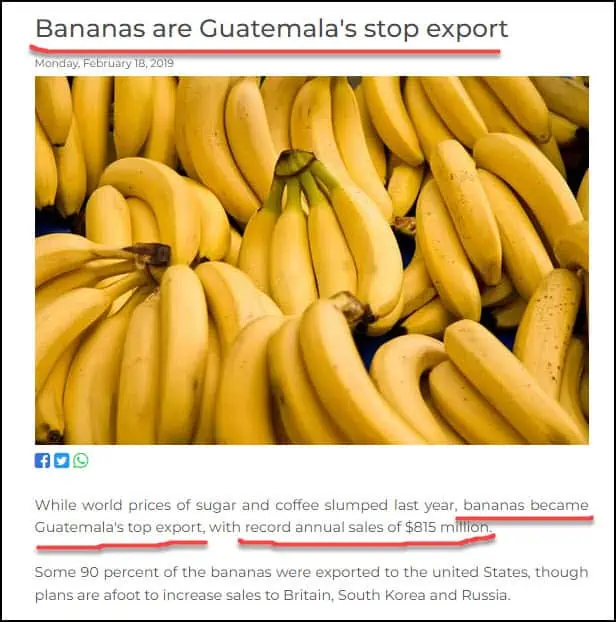5 Marketing Strategies for Business Survival During a Recession
“Marketing and innovation produce results; all the rest are costs.”– The Father of Business Consulting Peter Drucker. Managing a business […]
Read More »Become a successful marketing consultant: Learn more

If you have ever wanted to market a product or service to buyers in Central America, the Dominican Republic or the USA, you have come to the right place!
In this article, we are going to explain the free trade agreement that was made for this exact reason. It’s called CAFTA-DR.
What is CAFTA-DR, and why was it created?
CAFTA-DR is an acronym for the Dominican Republic-Central America Free Trade Agreement. It is an international trade agreement between the US, Costa Rica, El Salvador, Guatemala, Honduras, Nicaragua and Dominican Republic designed to uplift their economies.
The primary objective of this agreement is to promote trade between the United States, the Dominican Republic, and small developing nations in Central America.
This article highlights the top ten reasons CAFTA-DR was created and why it is important for the economic growth of developing countries in Central America.
As we get started, it will be helpful for you to review these articles:
Ok, now that you have a solid but brief understanding of International Marketing, the importance of Free Enterprise and the Globalization vs Deglobalization, let’s review the CAFTA-DR agreement.
The CAFTA—DR trade agreement was created and signed in 2004.
Even though the trade treaty has been in force since 2004, negotiations began between the U.S. and five Central American countries as early as 2001.
The Dominican Republic joined the trade negotiations in 2003, and the treaty was later renamed from CAFTA to CAFTA-DR.
The agreement was signed by all negotiating countries in 2004, including:
The CAFTA-DR treaty was formally enacted on March 1, 2006, after the Organization of American States received official copies of the trade agreement.
Costa Rica joined the free trade treaty in 2007 after a public referendum.
Here is an example of Costa Rica’s trading partners in 2019 as reported by World Bank’s World Integrated Trade (WITS). As you can see, their largest trading partner is the United States, representing 42% of their exports at $4.9 billion USD, Guatemala representing 5%, Nicaragua 4%, Honduras representing 3.5%, El Salvador at 3% and Dominican Republic imported 2% of Costa Rica’s exports.
Comparatively, here is the breakdown of Guatemala’s top trading partners in 2019:
The primary objective of the CAFTA-DR agreement is to promote free trade between the United States, the Dominican Republic, and small developing nations in Central America. Trading member countries do not have to worry about quotas, duties, and other restrictions. The treaty allows for the free movement of goods and services within the shared market environment.
By creating a free trade area, member countries can engage in different sectors besides trade. The CAFTA-DR encourages transnational cooperation, allowing member states to partner in various projects, implement joint solutions, and create strategic policies to benefit all involved nations. Transnational cooperation also ensures improved political stability within the region.
One of the main objectives of the CAFTA-DR trade agreement is to foster economic growth within the region. All member countries benefit from increased production and trade, leading to better GDP. Enhanced economic growth consequently spurs prosperity and stability within the region. It also improves the quality of life for the citizens of the member states.
Even though their main role is to protect domestic industries, tariffs and quotas are among the major impediments to international trade. Some countries end up with surplus goods since they can’t find markets for their products. The CAFTA-DR trade treaty aims to solve this problem by reducing and eventually removing these tariffs and barriers, allowing member countries to trade freely and compete better.
With trade tariffs and quotas out of the way, member countries can now find markets for the products and export more goods and services within the region. CAFTA-DR member countries have witnessed a tremendous increase in exports since signing the agreement. For instance, the United States traded goods worth $57.4 billion in 2018, with $25.2 billion accounting for imports and $32.2 billion in exports.
The CAFTA-DR trade agreement has several provisions on investment, financial services, and public procurement procedures. These provisions lay out the foundations for promoting investment ties between member countries. Business persons and firms from the different member states can invest in any country within the region without stringent restrictions or requirements.
The CAFTA-DR agreement seeks to uphold and protect workers’ rights and labor laws in the various member countries. The treaty ensures labor rights laws are similar across the member states and meet international standards. These measures help strengthen workers’ rights and working conditions within the region.
The CAFTA-DR treaty seeks to spur economic growth, creating exciting job opportunities for skilled workers and professionals in the region. Qualified job seekers can look for work anywhere within the member countries. Besides, applying for work permits is relatively easier for citizens of member states.
The CAFTA-DR trade agreement has provisions for intellectual property rights. All the member nations must ratify treaties governing and regulating intellectual property rights. They must provide procedures governing the protection of geographical indications, patents, copyrights, and trademarks. Member countries must also commit to proscribe the tampering with digital rights.
Lastly, the CAFTA-DR treaty works to ensure transparent and fair procedures in cross-border trade between member countries. The agreement seeks to create a better trading environment and encourage transparent investments and businesses. This measure ensures citizens of member nations can thrive in whatever industry.
Even though the CAFTA-DR trade agreement has a few shortcomings, it goes a long way toward fostering economic growth and opening markets for member countries.
The agreement also encourages transnational cooperation, ensuring free trade within the member nations.